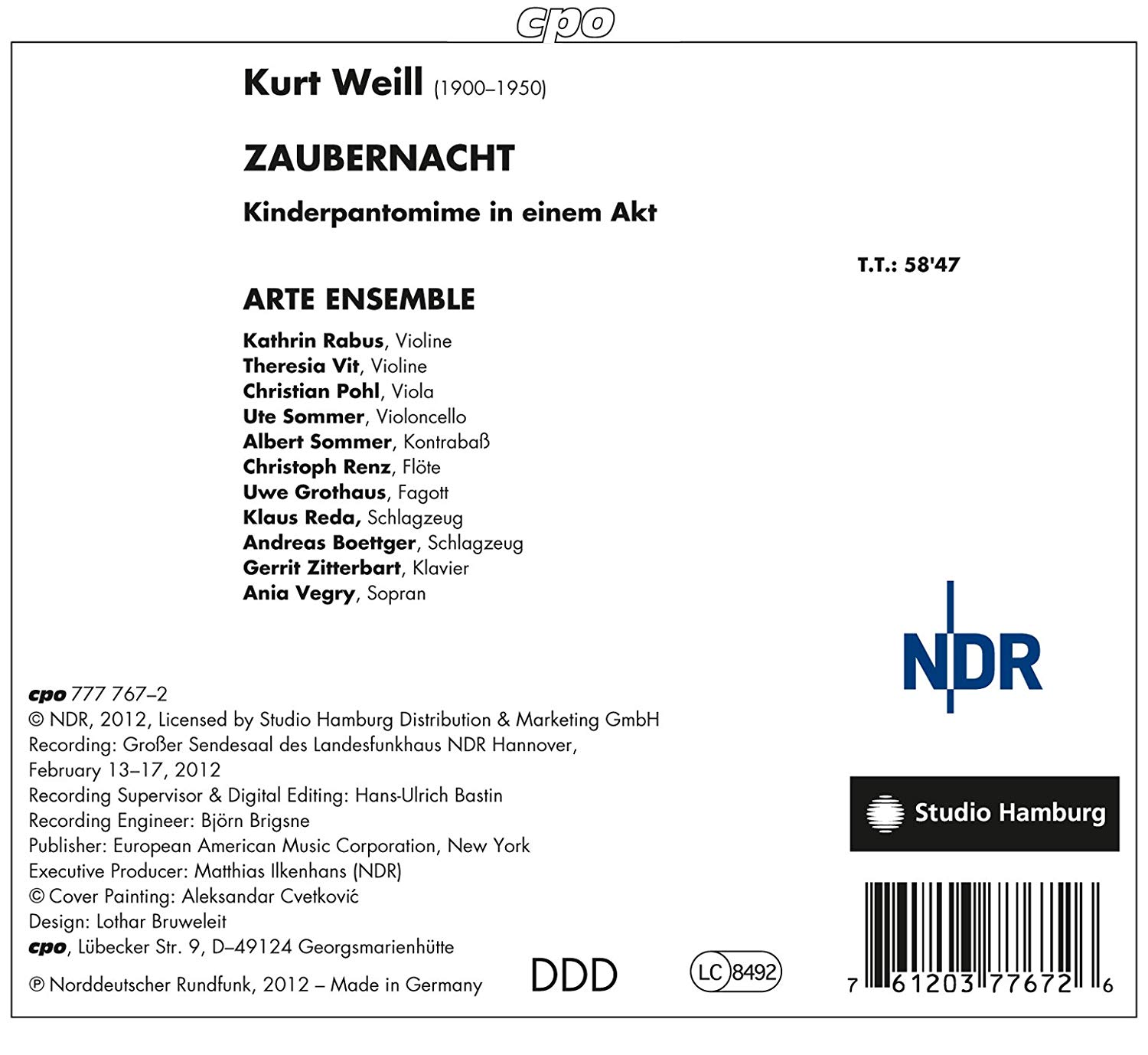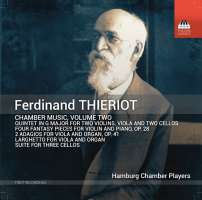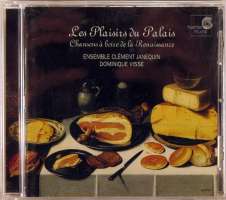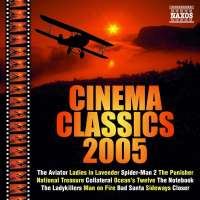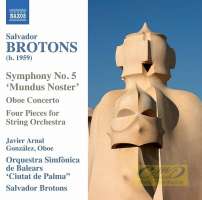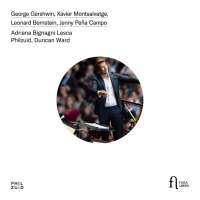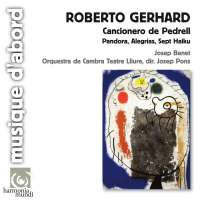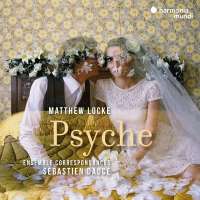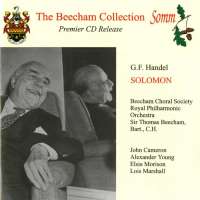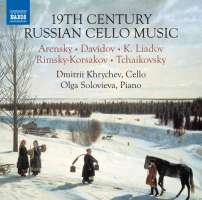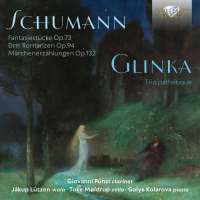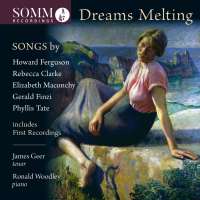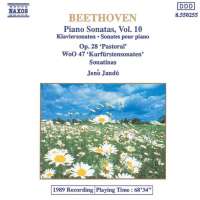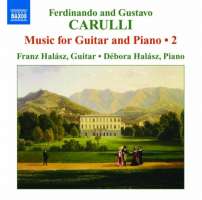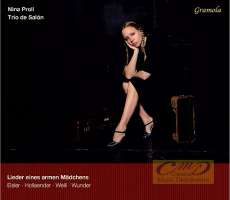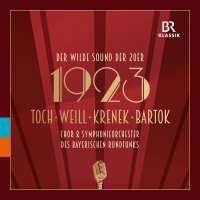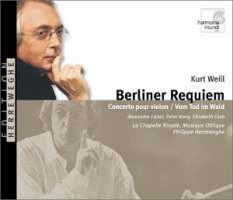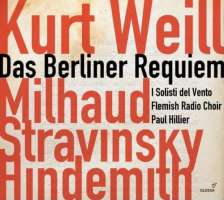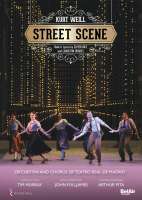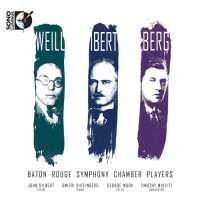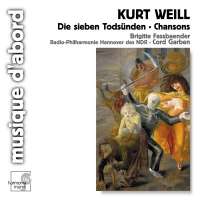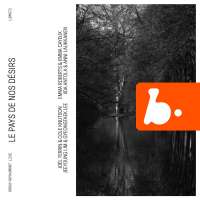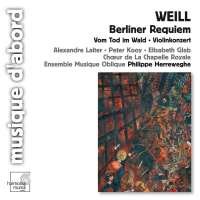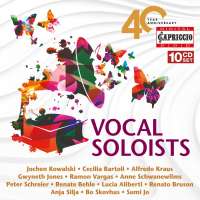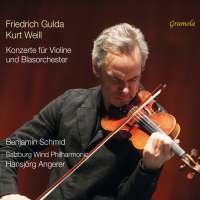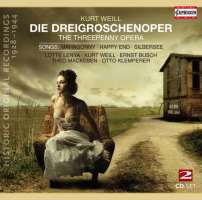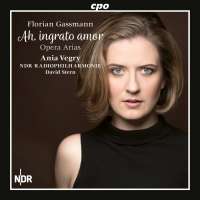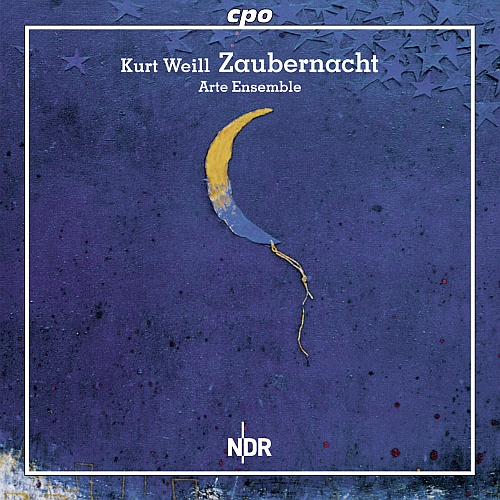
kompozytor
Weill, Kurt
tytuł
Weill: Zaubernacht
wykonawcy
Vegry, Ania;
Arte Ensemble
Arte Ensemble
nr katalogowy
CPO 777767
opis
When the curtain rose to quiet string tones in the Berliner Theater am Kurfürstendamm on 18 November 1922, hardly anybody in the audience was familiar with the composer’s name on the program. The work being presented was a new children’s pantomime entitled Zaubernacht (Magic Night) and held in store fanciful costumes and appealing stage sets along with its music. The action: a toy fairy sings her song by night and rouses to life various toys in the children’s room shared by a pair of siblings. The music had been written by a young man of twenty-two who was studying composition with Ferruccio Busoni: Kurt Weill. In view of the limited budget, he instrumented the piece for a chamber ensemble consisting of nine members while selecting an unusual group of instruments for the work: piano, percussion, and five strings with a flute and a bassoon. He set a creative challenge for himself and met it individually and appealingly. We have only recently learned the same because the score was lost until it surprisingly resurfaced in a publisher’s safe in 2006. Now you for the first time have the opportunity to listen to the elegant toy waltzes, marches, and polkas in their original form. Genuine pleasure!
nośnik
CD
gatunek
Muzyka klasyczna
producent
CPO
data wydania
22-02-2013
EAN / kod kreskowy
761203776726

(Produkt nie został jeszcze oceniony)
cena 39,00 zł
lubProdukt na zamówienie
Wysyłka ustalana indywidualnie.
Darmowa wysyłka dla zamówień powyżej 300 zł!
Darmowy kurier dla zamówień powyżej 500 zł!
sprawdź koszty wysyłki